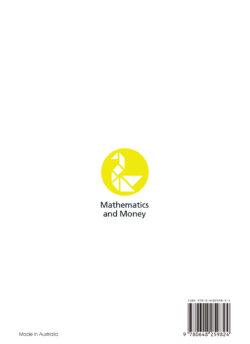Description
Dice Games for Place Value and other maths concepts is packed full of great ideas for developing the concept of place value. Other games focus on ideas such as rounding, percentages, multiples and patterns. All games use simple, readily available dice and are easy to play. The rules are easy to follow and the games may be played in 10-15 minutes or extended into a full lesson.
Includes teaching notes.
| Dice Games for Place Value Book | |
| Australian Curriculum Links | Concept |
| Yr 4: ACMNA073 | Fluency with the four operations. |
| Yr 4: ACMNA079 | Practice in recalling multiplication facts and computing 2-digit by 1-digit products. Associative property of multiplication. |
| with extension to larger numbers | The multiplicative relationship between places (place value): each place is worth 10 times more than that to its right. |
| Yr 3: ACMNA053 | Develop place value understanding. |
| Yr 4: ACMNA072 | Interpreting non-standard partitions to calculate the value of a three digit number (e.g. 2 hundreds, 11 tens and 6 ones). |
| Yr 3: ACMNA053 | Fluency with the four operations using numbers 1 – 6. |
| Yr 4: ACMNA072 | Addition of one and two-digit numbers. |
| Yr 4: ACMNA073 | Addition and subtractions of numbers in the thousands. Place Value. |
| Yr 4: ACMNA079 | Using the cartesian coordinate system in the positive quadrant. |
| Allocating places to digits and recognising how this changes the value of the digit and number. | |
| Yr 4: ACMNA073 | Identifying digits within numbers that have given place values (to hundreds of thousands). |
| Yr 4: ACMNA073 | The multiplicative relationship between places (place value): each place is worth 10 times more than that to its right. Adding numbers to 1000. |
| Yr 2: ACMNA027 | Using the area model to understand multiplication, including commutative property. |
| Yr 3: ACMNA053 | Addition, subtraction and multiplication with numbers 1 – 6. Probability. |
| Adding two-digit and one-digit numbers and representing sums with standard additive partitions (e.g. 45 as 40+5). | |
| Yr 5: ACMNA099 | Rounding three-digit numbers to the nearest hundred. Allocating places to digits in order to create numbers with certain values. |
| Yr 6: ACMNA128 | Rounding decimal numbers to the nearest tenth or whole number. Adding decimal numbers. |
| Yr 1: ACMNA015 | |
| Yr 2: ACMNA030 | Identifying numbers that add to ten. Adding strings of one-digit numbers. |
| Yr 2: ACMNA030 | |
| Yr 3: ACMNA055 | Identifying numbers that add to a multiple of ten. Adding strings of one-digit numbers. |
| Yr 4: ACMNA076 | Linking multiplication and division to identify the missing number given one number and the product (e.g. 6 x __ = 24). |
| Yr 4: ACMNA074 | |
| Yr 5: ACMNA098 | Identifying multiples of given one-digit numbers. |
| Yr 6: ACMNA134 | |
| Yr 7: ACMNA177 | Using the order of operations applied to five one-digit numbers in order to create an answer close to a given value. |
| Yr 6: ACMNA131 | Interpreting percentage as the number of hundredths shaded on a 10×10 playing grid. |
| Yr 2: ACMNA026 | Counting in multiples from any starting point. |
| Yr 5: ACMNA098 | |
| in preparation for | |
| Yr 6: ACMNA125 | |
| Yr 6: ACMNA126 | |
| Yr 7: ACMNA152 | Identifying the lowest common multiple of two numbers in the range 1-6. |



















